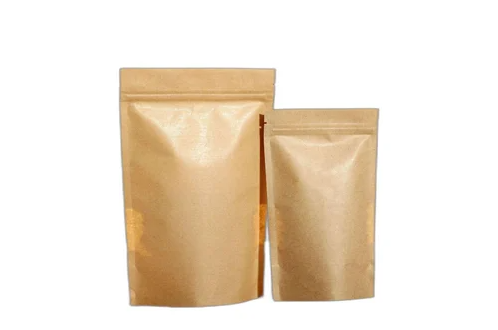Product Details

Waterproof Paper Packaging
Waterproof paper packaging is designed to resist water and other liquids, ensuring the contents remain dry and protected during storage and transportation. This type of packaging is often used for food products, cosmetics, pharmaceuticals, and other moisture-sensitive items. It is created using various techniques and materials to enhance its water resistance while maintaining the eco-friendly properties of paper. Here are some key aspects:
Key Features:
- Water Resistance: Treated to prevent water penetration, maintaining the integrity of the packaging and protecting the contents.
- Durability: Enhanced strength to withstand handling and transportation, reducing the risk of tears or damage.
- Eco-Friendly: Often made from renewable resources and designed to be recyclable or biodegradable, aligning with sustainability goals.
- Printability: Suitable for high-quality printing, allowing for branding and product information to be clearly displayed.
Manufacturing Techniques:
- Coatings: Application of waterproof coatings such as wax, polyethylene, or other biodegradable alternatives.
- Laminations: Lamination with materials like plastic films or bio-based films to create a barrier against moisture.
- Impregnation: Infusion of water-resistant chemicals into the paper fibers during production.
Applications:
- Food Packaging: Used for items like bakery products, fresh produce, and frozen foods.
- Cosmetic Packaging: Ideal for creams, lotions, and other personal care products.
- Pharmaceuticals: Ensures medicines and supplements remain dry and effective.
- Retail and E-commerce: Protects products during shipping and handling.
Benefits:
- Product Protection: Keeps contents safe from moisture damage, extending shelf life.
- Environmental Impact: Reduces reliance on plastic packaging, promoting sustainability.
- Versatility: Can be customized for various shapes, sizes, and uses.
- Consumer Appeal: Enhances the perceived quality and eco-friendliness of products.
Challenges:
- Cost: May be more expensive than conventional paper due to additional treatments.
- Recycling: Some coatings and laminations can complicate the recycling process.
- Performance: Must balance water resistance with other functional requirements like breathability and flexibility.
Waterproof paper packaging represents a significant advancement in sustainable packaging solutions, addressing the need for moisture-resistant materials without compromising on environmental responsibility.
